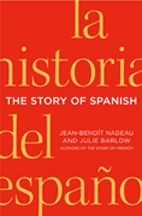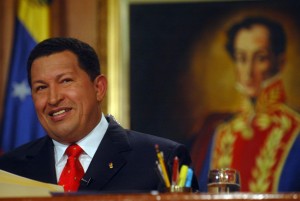By Jean-Benoît Nadeau & Julie Barlow
In 1999, Venezuelan president Hugo Chávez officially renamed his country the Bolivarian Republic of Venezuela. The move underlined the fact that Venezuela had just joined the club of Latin American nations that embraced bolivarianismo, or socialism inspired by the life and works of the nineteenth-century revolutionary Simón Bolívar. Bolívar, who came to be known as El Libertator, was a larger than life character who liberated half a dozen countries from Spanish rule.
Today, there are entire books devoted to the rally calls Bolívar coined while liberating Colombia, Peru, Venezuela, Ecuador, Panama, and the country that took his name: Bolivia. Perhaps thanks to his way with words, Bolívar became the best known of the Latin American revolutionaries who transformed Spain’s four viceroyalties into seventeen independent countries by the beginning of the twentieth century, each with their own cultural production.
But Bolívar wasn’t Venezuela’s only contribution to the future of Spanish.
Before Bolívar, there was Francisco de Miranda, El Precursor, the revolutionary figure who set the Latin American independence movement in motion. By 1790, Miranda conspired with the British to help Venezuela gain independence from Spain. In 1806, he led an attack on colonial Venezuela, waving a Venezuelan flag he had designed himself.
Latin American independence was of course a fantastic boon for the Spanish language, since each new Spanish-speaking country had a unique vision, set of policies, and culture that in turn would further disseminate Spanish. The new Latin American republics would go on to produce a Spanish-speaking continent whose population was more than ten times that of Spain’s.
Yet without the third giant of Latin America’s revolutionary period – also a Venezuelan – who knows what would have happened to Spanish in the New World?
This was El Escritor (the writer), Andrés Bello. Bello understood that independence could end up splitting Spanish into separate dialects the way the continent split into separate political entities. He devoted his long life to defining a clear standard of Spanish that would be used throughout Latin America.
The result? Bello’s major work on language was the Gramática de la lengua castellana destinada al uso de los americanos (Grammar of the Castilian Language for the Use of Americans). First published in 1847, it would go on to be an immense success, appearing in six revised editions during his lifetime and more than seventy editions in the twentieth century.
Andrés Bello has often been described as the Spanish-speaking world’s version of Noah Webster, and indeed, like Webster, he linked language, education, law and nationhood. Bello’s Gramática was conceived for americanos.
Today, of all international languages, Spanish is the only one that has clear national standards, as well as an international standard. This is a direct consequence of Andrés Bello’s work.
 More about the history Spanish language can be found in our new book, The Story of Spanish, to be released May 2013 (St. Martin’s Press).
More about the history Spanish language can be found in our new book, The Story of Spanish, to be released May 2013 (St. Martin’s Press).












